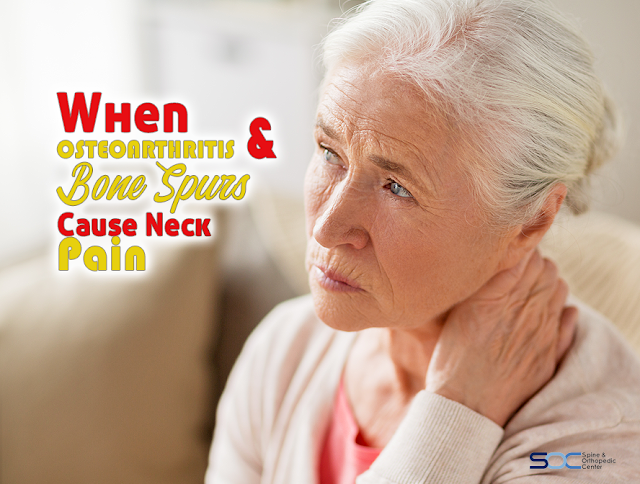When Osteoarthritis and Bone Spurs Cause Back and Neck Pain
Spinal osteoarthritis is a very common condition of aging and is especially prevalent in those over 60 years of age. As joint cartilage begins to break down, the spinal vertebrae may begin to rub against each other. As a result, abnormal bony growths, which are known as osteophytes or more commonly as bone spurs, may begin to develop as the body tries to protect itself against this breakdown and friction.
As bones spurs grow, they can extend into the surrounding tissues, sometimes leading to neck and back pain, stiffness, numbness, burning, and other symptoms. In addition, these spurs can compress nerve roots and even the spinal cord.
Symptoms often vary depending on where the spur develops. Some areas can cause severe localized pain, restrict movement, generate radiating pain in the arms or legs, or even headaches and other pain or weakness. However, some bone spurs may cause no discomfort at all.
Although smoking and excess body weight may not be the cause of bone spurs, they can speed spinal degeneration and increase the risk of conditions such as bone spurs. Additional risk factors may be derived from spinal traumas like compression fractures or whiplash, genetics, poor posture, and diet.
Stretching, exercise or physical therapy can sometimes help. Anti-inflammatory and pain prescriptions may also provide relief.
However, at times, symptoms will continue until the bone spur is removed and pressure on the nerve is relieved.


Comments
Post a Comment